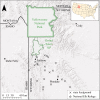Winter feeding of elk in the Greater Yellowstone Ecosystem and its effects on disease dynamics
- PMID: 29531148
- PMCID: PMC5882999
- DOI: 10.1098/rstb.2017.0093
Winter feeding of elk in the Greater Yellowstone Ecosystem and its effects on disease dynamics
Abstract
Providing food to wildlife during periods when natural food is limited results in aggregations that may facilitate disease transmission. This is exemplified in western Wyoming where institutional feeding over the past century has aimed to mitigate wildlife-livestock conflict and minimize winter mortality of elk (Cervus canadensis). Here we review research across 23 winter feedgrounds where the most studied disease is brucellosis, caused by the bacterium Brucella abortus Traditional veterinary practices (vaccination, test-and-slaughter) have thus far been unable to control this disease in elk, which can spill over to cattle. Current disease-reduction efforts are being guided by ecological research on elk movement and density, reproduction, stress, co-infections and scavengers. Given the right tools, feedgrounds could provide opportunities for adaptive management of brucellosis through regular animal testing and population-level manipulations. Our analyses of several such manipulations highlight the value of a research-management partnership guided by hypothesis testing, despite the constraints of the sociopolitical environment. However, brucellosis is now spreading in unfed elk herds, while other diseases (e.g. chronic wasting disease) are of increasing concern at feedgrounds. Therefore experimental closures of feedgrounds, reduced feeding and lower elk populations merit consideration.This article is part of the theme issue 'Anthropogenic resource subsidies and host-parasite dynamics in wildlife'.
Keywords: Brucella abortus; brucellosis; chronic wasting disease; disease ecology; feedgrounds; wildlife–livestock conflict.
© 2018 The Authors.
Conflict of interest statement
We have no competing interests.
Figures





References
-
- Dean R, Gocke M, Holz B, Kilpatrick S, Kreeger T, Scurlock B, Smith S, Thorne ET, Werbelow S.2004. Elk feedgrounds in Wyoming. Wyo. Game Fish Dep. Unpubl. Rep. Cheyenne Wyo. USA.
-
- Creech TG, Cross PC, Scurlock BM, Maichak EJ, Rogerson JD, Henningsen JC, Creel S. 2012. Effects of low-density feeding on elk–fetus contact rates on Wyoming feedgrounds. J. Wildl. Manag. 76, 877–886. (10.1002/jwmg.331) - DOI
Publication types
MeSH terms
Associated data
LinkOut - more resources
Full Text Sources
Other Literature Sources
Miscellaneous

